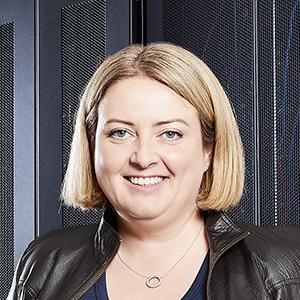
Written by
Published
Category
Key topics
Many organisations are failing to grasp the full potential of the new technologies they are implementing
Throughout history, new technologies have transformed how businesses operate, but the digital revolution has generated an unprecedented rate of change. With technologies like the Internet of Things, 5G, robotics and artificial intelligence becoming ever more practicable, business leaders are racing to integrate these new systems into their organisations.
While anyone implementing digital technology is likely to see an improvement in productivity and/or efficiency, only those who use these systems to find new ways of doing business will see the full benefits these tools are capable of delivering.
Two distinct mindsets
How business leaders are managing digital transformation in their organisations is the subject of recent research conducted by Imperial College Business School in collaboration with Ericsson. The project, which spanned four years, canvassed senior business leaders at a variety of companies across several countries in regard to how they perceive digital technologies, how technology is changing their markets, and how they are integrating digital systems into their organisations.
We identified two distinct mindsets, which we have called the “laggards” and “leaders”. While both groups see digital transformation as beneficial, how they are implementing new technologies is very different.
Laggards believe improved communication will enable greater co-ordination and collaboration, inspiring new innovation
Leaders are those who are actively embracing their digital transformation and using new systems to change both the structure of their organisations and their products. They are not just implementing new tools, but doing so in a way that redefines how they are conducting business.
Laggards are taking a narrower approach and applying new technology to improve what they are already doing. While they are certainly seeing a benefit, they are doing little to prepare themselves for the growing tide of nimble startups and dynamic competitors beginning to emerge.
This is the difference between a pharmaceutical company, for example, using digital technologies to completely restructure how their supply chain and logistics operations integrate with customers and the rest of the organisation, and simply using technology to keep better track of their supply chain. One is creating opportunities to reach new customers and partners with new products, while the other is merely improving productivity.
Three differences between leaders and laggards
We identified three main areas where leaders and laggards differ:
- How they are approaching innovation
- How they are approaching market development
- How they are approaching organisational structure
In terms of innovation, laggards typically see digital systems as an opportunity to speed up and improve the communication processes they already have in place. They believe improved communication will enable greater co-ordination and collaboration, inspiring new innovation. While this might be successful for a period of time, it will become more difficult to adapt to threats posed by startups and competitors pioneering new ways of doing business.
Leaders, meanwhile, are taking a much broader view of digital transformation and identifying opportunities for convergence between different types of technology. They are not just looking at how a current business process can be improved, but how new products and services can be created by bringing previously separate systems together. This creates efficiencies while also creating opportunities to develop ideas that were impossible under the previous system.
For market development, leaders are well aware digital technology is changing not just how they communicate, but who they communicate with as well. This allows them to reach people and partners who were previously inaccessible: this might be a segment of customers who were too difficult to reach, or a small supplier they can now affordably do business with. These new markets help businesses diversify and survive the challenges presented by startups and rivals.
Leaders are well aware digital technology is changing not just how they communicate, but who they communicate with
Laggards, on the other hand, are focusing on improving and streamlining the relationships they already have. While they may be able to reduce costs and improve communication, they are missing out on the new markets that can be reached via digital systems.
The third major differentiator is how leaders and laggards are altering the hierarchy of their organisations. For the last hundred years, organisations have been typically run from the top down, with a CEO implementing decisions through a chain of managers. Digital laggards are maintaining this structure, with the systems they are implementing designed to make the delegation process easier or more efficient.
Leaders, however, are utilising new technologies to restructure their organisations to be more autonomous and agile. As an organisation that can function both in a hierarchy and as part of a network, they can respond to threats and changes in the market very quickly. Digital technology is providing the communication tools necessary to make this possible.
How businesses manage their digital transformation will dramatically affect how they operate in the coming years, and business leaders should consider reorganising for agility. By doing this, they are preparing for new competitors while also finding new ways of doing business themselves.

